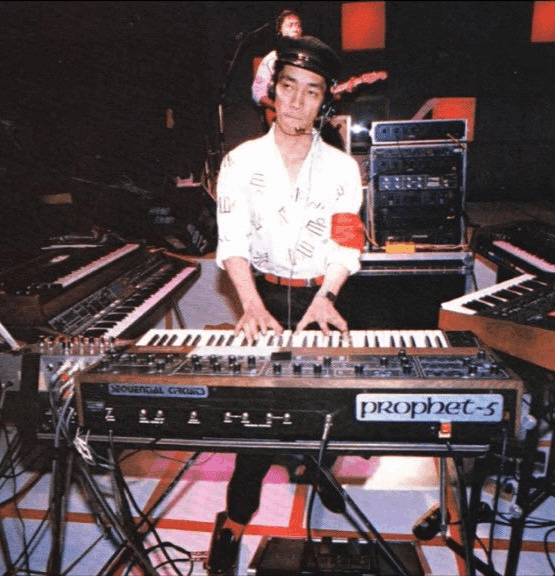
Deviation and Harmony: The Allure of Eastern Scales Woven by Ryuichi Sakamoto's "Riot in Lagos"
"Riot in Lagos" is widely acknowledged as a composition that foreshadowed the rise of hip-hop. During Ryuichi Sakamoto's era with YMO (Yellow Magic Orchestra), he experienced increasing frustration with the overwhelming popularity of YMO in Japan. As a talented but relatively unknown arranger and studio musician, he felt mentally overwhelmed when suddenly thrust into the public eye due to YMO's breakthrough success. Compounding his frustration was his distinctive musical personality, which made him increasingly irritated by YMO's overwhelming mainstream popularity at home. In response, he took a divergent path with his solo album "B2 UNIT" (1980), and one particular piece that stood out was "Riot in Lagos." Interestingly, despite Ryuichi's intention to challenge YMO's direction with such compositions, Hosono Haruomi, the leader of YMO, held it in high regard. In fact, during the second YMO European and American tour in 1980, he made the decision to open the shows with this particular piece, and as a result, the live performances received enthusiastic responses from audiences in many cities.
By the way, the piano version of "Riot in Lagos" is featured on his 2004 piano rendition album, titled "04." Ryuichi Sakamoto himself supervised the piano sheet music version of this album piece, which includes accompanying commentary on each composition. Recently, while reviewing it again, I made an interesting observation. "Riot" contains a counter melody that follows the same melodic structure but is four notes lower than the main melody. For instance, if the main melody phrase is "La Do Re Fa So Re Mi Do Re," the counter melody would be "Mi So La Do Re La Ti So La." This musical design is crucial as it significantly contributes to the charm of the piece. Without this arrangement, its appeal would be significantly diminished. Interestingly, this design was presumably not intentional but rather emerged half-accidentally during the composition process.


At that time, Ryuichi Sakamoto had a fondness for an instrument called the Prophet-5 synthesizer. By manipulating multiple knobs, this synthesizer allowed the player to produce two different notes simultaneously at a certain pitch. While composing 'Riot in Lagos' using this synthesizer, he unintentionally left this setting enabled, resulting in additional pitches a fourth below blending with the intended notes. Presumably, while playing the keyboard with this configuration, he serendipitously discovered that the melody of the piece emerged.

The main melody of the tune is "La Do Re Fa So Re Mi Do Re," which is a variation of the Eastern scale "La, Do, Re, Mi, So" with the addition of one deviating note, "Fa." It is interesting that the composer, who had a preference for using the Eastern scale, decided to incorporate a note that deviates from the scale while also adopting the scale into the melody of this particular piece. Incidentally, even the composer himself was at a loss to explain the reasons behind the explanatory comments provided in the sheet music.
Throughout his life, Ryuichi Sakamoto seems to have been unaware of it, but by adding a counter melody with the same melodic pattern four degrees lower, "Riot" skillfully avoids deviating from the Eastern scale "La, Do, Re, Mi, So." The main melody, "La Do Re Fa So Re Mi Do Re," includes a deviating note, "Fa," but when this note is played, the counter melody plays "Do," thus not deviating from the Eastern scale.
Furthermore, when a deviating note, "Ti," from the Eastern scale is mixed into the counter melody "Mi So La Do Re La Ti So La," the main melody plays "Mi," which means it does not deviate from the scale.
Thus, by having a pair of main and counter melodies where one may deviate from the Eastern scale while the other remains within it, "Riot" is created in a way that maintains the overall adherence to the Eastern, or pentatonic, scale that Ryuichi favors.

One of the characteristics of Ryuichi's music is that the melody and harmonic progressions often belong to different keys. Interestingly, there is no record of him discussing this composition technique, suggesting that he has been using it entirely unconsciously throughout his career. In the case of "Riot in Lagos," there is no harmonic progression, making it a one-chord piece. However, the melody and counter-melody belong to different keys, showcasing his composition technique fully. When combined with beats strongly influenced by African polyrhythms, "Riot" emerged as an unprecedented and innovative piece of music. It is understandable that African-American musicians, including Afrika Bambaataa, were particularly inspired by this composition among the works by YMO members.

この記事が気に入ったらサポートをしてみませんか?
